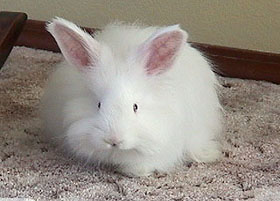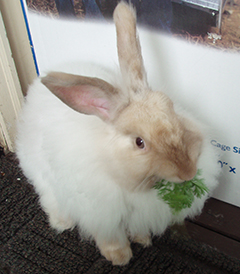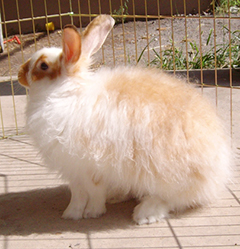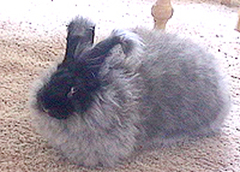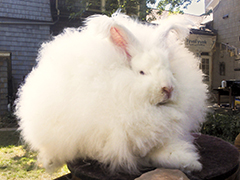Angora wool comes from the angora rabbit, and is 7 times warmer than wool.
Characteristics:
• Natural, Animal Fiber (rabbits)
• Clean, directly from the rabbit
• Does not require washing, picking, combing, or carding
• Luxurious
• Very durable Hand-washable
• Not irritating to the skin like sheep’s wool
• Easy to dye
• Blends extremely well with other fibers
Preparing Angora For Handspinning
Angora wool is about the only fiber that can be spun directly from its source. It does not need to be cleaned or carded depending on how it is harvested.
Harvesting Angora Wool
You can begin harvesting angora when it is three inches long. That is about the length in which the rabbit begins to shed the wool naturally. The longer the wool is left on the rabbit, presents a big risk to its health because of the possibility of wool block. Hand, combing, or shorned can remove Angora fiber.
Prime angora is hand plucked from the rabbit. The fiber is usually combed first to free it from any tangles or mats. After it has been plucked, the staples are kept parallel so that it will be easy to draft during spinning. Prime angora can be carded, but it really isn’t necessary.
Angora that is removed during combings can also be spun into yarn. It will usually have little snarls in it which may make it impossible to spin a smooth even yarn. But in some cases, carefully carding the combings will remove the snarls. If the snarls cannot be removed you can still spin the fiber, but it will make an interesting textured yarn.
Carding
It is easier to card angora using handcarders than it is with a drumcarder. Cotton carders are better to use, because of the fine teeth. Drumcarding 100% angora is very difficult because the fiber will stick and lump between the drums. Patience is needed when using the drumcarder on angora. Multiple runs will be needed in order to make the fibers uniform.
Blending
Blending angora with another fiber, such as wool, is a good way to extent its use.
Handspinning Angora
Spinning angora is very different than spinning wool. It is very soft and slippery, therefore beginners find it difficult to spin 100% angora.
Spinning Wheel
Angora should be spun at a high speed with little or no tension. Adding a little wool to the fiber will make it easier to spin. Do not be concerned if the yarn is not fuzzy when you are spinning it. It becomes fuzzy later after it has been plied, set, and handled.
Hand Spindle
A top whorl spindle is best for spinning angora because of the softness of the fiber. The spindle should also be lightweight.
End Uses For Angora Yarn
Angora yarn can be used for knitting and felting projects. 100% angora is too soft for weaving.
Angora is ideal for making baby garments, winter underwear, sweaters, hats, scarves, and mittens.

